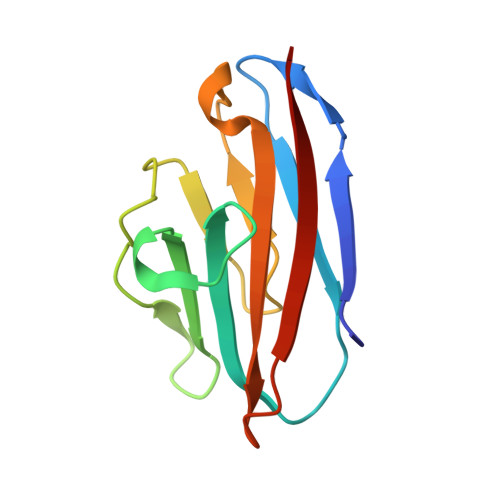Structure of the N-terminal dimerization domain of CEACAM7.
Bonsor, D.A., Beckett, D., Sundberg, E.J.(2015) Acta Crystallogr F Struct Biol Commun 71: 1169-1175
- PubMed: 26323304
- DOI: https://doi.org/10.1107/S2053230X15013576
- Primary Citation of Related Structures:
4Y89 - PubMed Abstract:
CEACAM7 is a human cellular adhesion protein that is expressed on the surface of colon and rectum epithelial cells and is downregulated in colorectal cancers. It achieves cell adhesion through dimerization of the N-terminal IgV domain. The crystal structure of the N-terminal dimerization domain of CEACAM has been determined at 1.47 Å resolution. The overall fold of CEACAM7 is similar to those of CEACAM1 and CEACAM5; however, there are differences, the most notable of which is an insertion that causes the C'' strand to buckle, leading to the creation of a hydrogen bond in the dimerization interface. The Kdimerization for CEACAM7 determined by sedimentation equilibrium is tenfold tighter than that measured for CEACAM5. These findings suggest that the dimerization affinities of CEACAMs are modulated via sequence variation in the dimerization surface.
Organizational Affiliation:
Institute of Human Virology, University of Maryland School of Medicine, Baltimore, MD 21201, USA.















